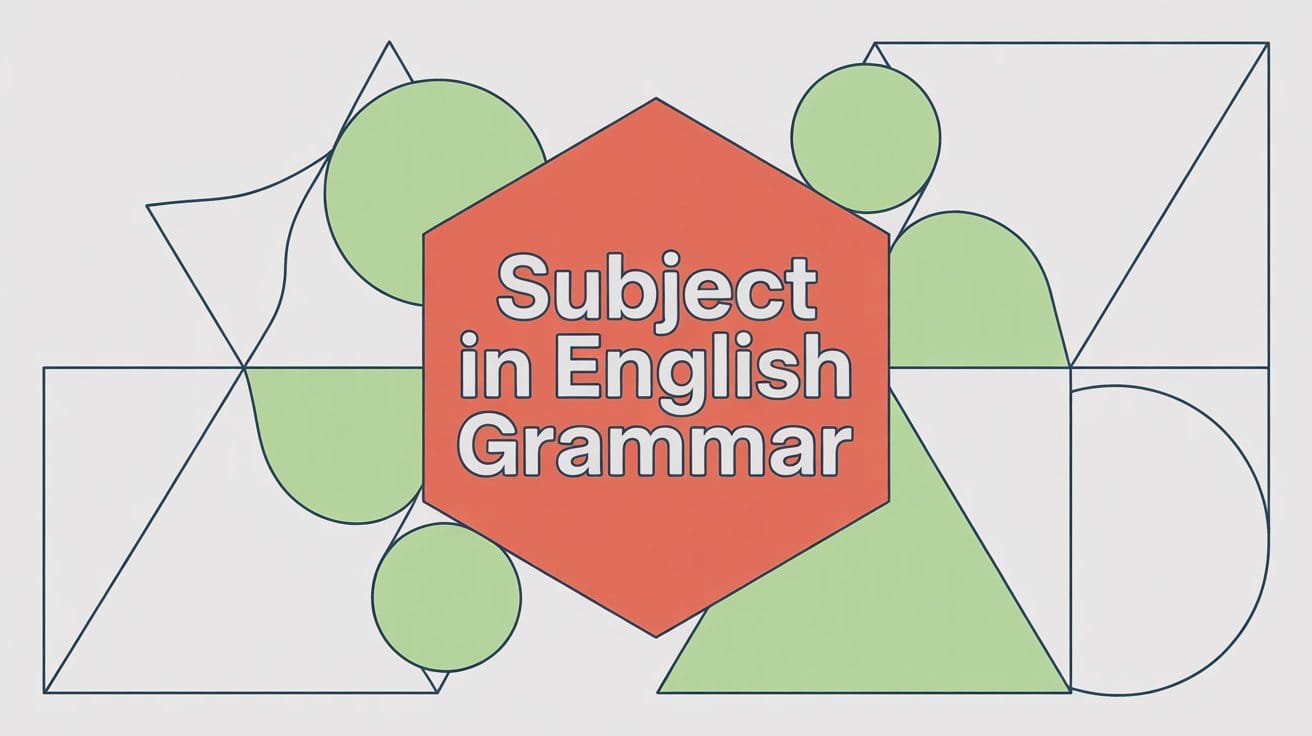Every sentence needs a subject. It’s the part that tells us who or what the sentence is about. The subject is the foundation that connects directly to the verb and gives the sentence meaning. Whether it’s one word or a full phrase, understanding how the subject functions will help you write with more confidence and control.
What Is a Subject?
In English grammar, the subject is the part of a sentence that tells us who or what is performing the action or being described. It’s usually a noun, pronoun, or noun phrase that works closely with the verb.
The subject typically answers the question “Who?” or “What?” before the verb.
Examples:
- Maya reads every morning.
(Who reads? → Maya is the subject.) - The old bookshelf collapsed.
(What collapsed? → The old bookshelf is the subject.)
Subjects don’t always appear at the start of the sentence, but they are always connected to the verb. Recognizing the subject helps you understand sentence structure and use verbs correctly.
Types of Subjects
Not all subjects look the same. Depending on how they’re structured, subjects can be simple, complete, or compound. Understanding these types helps you identify them more easily in any sentence.
Simple Subject
The simple subject is the main word (usually a noun or pronoun) that tells who or what the sentence is about—without any modifiers.
Example:
- Butterflies fly.
(“Butterflies” is the simple subject.)
Complete Subject
The complete subject includes the simple subject along with all its modifiers.
Example:
- The bright orange butterflies fly across the field.
(“The bright orange butterflies” is the complete subject.)
Compound Subject
A compound subject consists of two or more nouns or pronouns joined by a coordinating conjunction (such as and, or or) that share the same verb.
Example:
- The teacher and the students arrived early.
(“The teacher and the students” form the compound subject.)
Each type plays the same role in the sentence—identifying who or what the sentence is about—but the structure may vary depending on the sentence style.
Identifying the Subject in a Sentence
To find the subject in a sentence, start by locating the verb. Then ask yourself, “Who?” or “What?” is performing the action or being described.
Step-by-step approach:
- Find the verb
- Look for the main action or linking word in the sentence.
- Ask “Who?” or “What?” before the verb
- The answer will usually be your subject.
Examples:
- Sentence: The lights flickered during the storm.
→ What flickered? → The lights (subject) - Sentence: After the meeting, Jake reviewed his notes.
→ Who reviewed? → Jake (subject) - Sentence: Are the windows open?
→ What are open? → The windows (subject)
In most cases, the subject appears before the verb. But in questions and some inverted sentence structures, it may come after the verb or be split by helping verbs. Keeping your focus on the verb and asking the right question helps you spot the subject every time.
Subject-Verb Agreement
Once you’ve identified the subject, the next step is to make sure the verb matches it. This is known as subject-verb agreement—a basic rule in English grammar that helps keep sentences clear and grammatically correct.
The Rule:
A singular subject takes a singular verb.
A plural subject takes a plural verb.
Examples:
- The dog barks at strangers. (singular subject → singular verb)
- The dogs bark at strangers. (plural subject → plural verb)
Watch out for:
- Prepositional phrases after the subject:
The box of ornaments is fragile.
(Subject is “box,” not “ornaments.”) - Indefinite pronouns:
Everyone is ready. (not “Everyone are”) - Compound subjects:
My brother and sister live in different cities.
(Two subjects → plural verb)
Matching the subject with the correct verb form is essential to avoid confusion and maintain sentence accuracy.
Subjects in Different Sentence Structures
While the subject usually comes before the verb, some sentence types place it in less obvious positions—or leave it out entirely in form. Recognizing how subjects behave in different structures helps you read and write more accurately.
Imperative Sentences
In commands or requests, the subject is often implied, not stated.
Example:
- Close the window.
(Subject = you, understood but not written)
Interrogative Sentences
In questions, the subject often appears after the verb or between parts of the verb.
Example:
- Are you coming to the meeting?
(“You” is the subject, placed after “Are”)
Passive Voice
In passive constructions, the subject receives the action instead of doing it.
Example:
- The documents were signed by the manager.
(“The documents” is the subject, even though they’re not doing the action)
FAQs
What is the subject in a sentence?
The subject is the part of a sentence that tells who or what the sentence is about. It typically performs the action or is described by the verb.
Can a sentence have more than one subject?
Yes. A compound subject contains two or more subjects joined by a conjunction and shares the same verb.
Example: Anna and Leo work together.
How do I find the subject in a question?
Start by identifying the verb, then ask “Who?” or “What?” before it.
Example: Is the team ready? → Subject = the team
What is the difference between a subject and an object?
The subject performs the action; the object receives it.
Example: Jesse opened the door.
Subject = Jesse, Object = the door
Why is subject-verb agreement important?
It ensures that the subject and verb match in number (singular or plural), which keeps your writing grammatically correct and easy to understand.




Thank you so much is my first appreciation. It’s very useful for me and my pupils as it can be read and understood easily.
Thank you! We’re glad it’s helpful for you and your pupils. We wish you success in teaching.